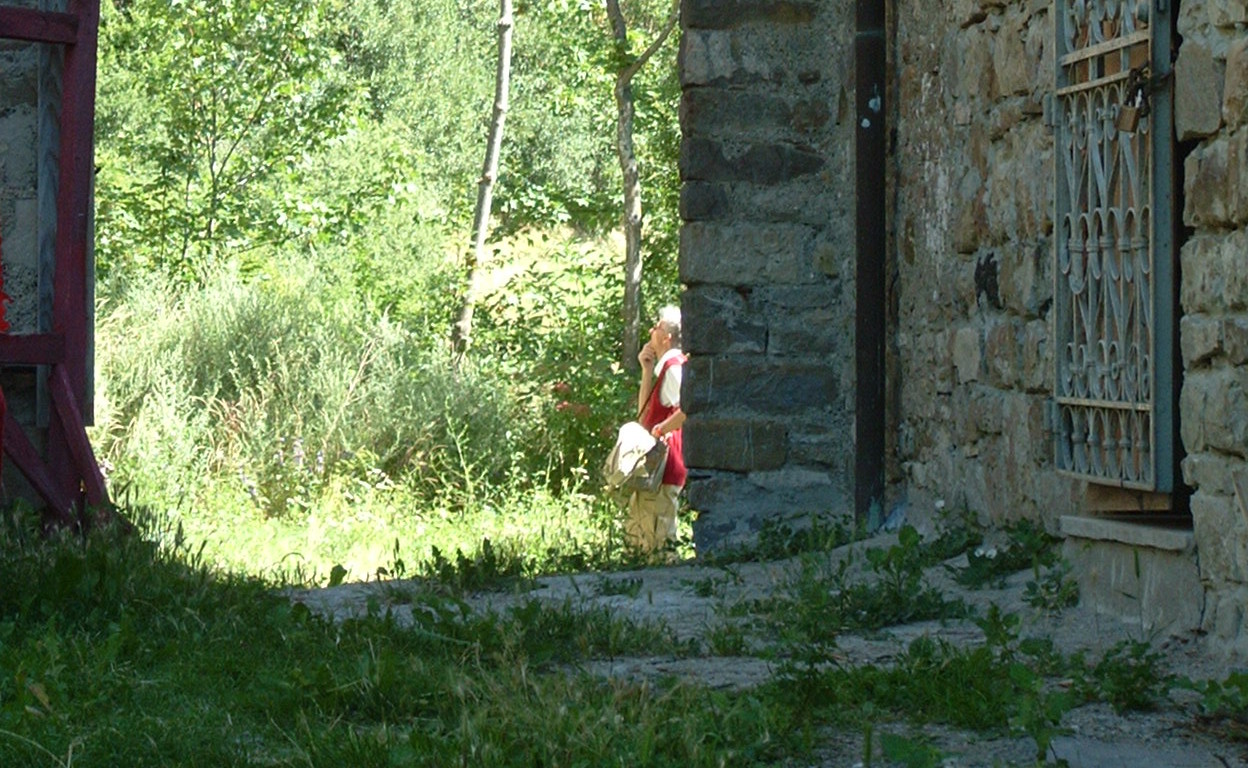Today marks five years since Tiziano Mannoni passed away.
There’s one thing that always characterised his work in publications and lectures: a need to visualise anything from research processes to production processes and complex human-environment systems in a schematic, understandable way. The most famous of such diagrams is perhaps the “material culture triangle” in which artifacts, behaviors and significants are the pillars on which archaeology is (or should be) based.
As a student, I was fascinated by those drawings, to the point of trying myself to create new ones. In 2012, in a rare moment of lucidity, I composed the diagram below trying to put together several loosely-related activities I had been doing in the previous years. Not much has changed since then, but it’s interesting to look back at some of the ideas and the tools.

Kotyle is the name I gave to a prototype tool and data format for measurements of the volume/capacity of ceramic vessels. The basic idea is to make volume/capacity measurement machine-readable and allow for automated measurements from digital representations of objects (such as SVG drawings). Some of the ideas outlined for Kotyle are now available in a usable form from the MicroPasts project, with the Amphora Profiling tool (I’m not claiming any credit over the MicroPasts tool, I just discussed some of the early ideas behind it). Kotyle is proudly based on Pappus’s theorems and sports Greek terminology whenever it can.
SVG drawings of pottery are perhaps the only finalised item in the diagram. I presented this at CAA 2012 and the paper was published in the proceedings volume in 2014. In short: stop using [proprietary format] and use SVG for your drawings of pots, vases, amphoras, dishes, cups. If you use SVG, you can automatically extract geometric data from your drawings ‒ and maybe calculate the capacity of one thousand different amphoras in 1 second. Also, if you use SVG you can put links to other archaeological resources such as stratigraphic contexts, bibliographic references, photographs, production sites etc directly inside the drawing, by means of metadata and RDFa.
Linked Open Archaeological Data (with the fancy LOAD acronym) is without doubt the most ambitious idea and ‒ unsurprisingly ‒ the least developed. Based on my own experience with studying and publishing archaeological data from excavation contexts, I came up with a simplified (see? I did this more than once) ontology, building on what I had seen in ArchVocab (by Leif Isaksen), that would enable publication of ceramic typologies and type-series on the Web, linked to their respective bibliographic references, their production centres (Pleiades places, obviously) and then expand this to virtually any published find, context, dig, site. Everything would be linked, machine-readable and obviously open. Granularity is key here, and perhaps the only thing that is missing (or could be improved) in OpenContext. A narrow view of what it may look like for a single excavation project is GQBWiki. I don’t see anything similar to LOAD happening in the near future however, so I hope stating its virtual existence can help nurture further experiments in this direction.
The original case study for LOAD is ARSILAI: African Red Slip in Late Antique Italy, that is my master’s thesis. The web-based application I wrote in Django naturally became the inspiration for creating a published resource that could have been constantly updated, based on feedback and contributions from the many scholars in the field of late Roman pottery. Each site, dig, context, sherd family, sherd type, ware has a clean URI, with sameAs links where available (e.g. sites can be Pleiades places, digs can be FastiOnLine records). Bibliographic references are just URIs of Zotero resources, since creating bibliographic databases from scratch is notoriously a bad idea. In 2012 I had this briefly online using an AWS free tier server, but since then I have never had again the time to deploy it somewhere (in the meantime, the release lifecycle of Django and other dependencies means I need to upgrade parts of my own source code to make it run smoothly again). One of the steps I had taken to make the web application less resource-hungry when running on a web server was to abandon Matplotlib (which I otherwise love and used extensively) and create the plots of chronology distribution with a Javascript library, based on JSON data: the server will just create a JSON payload from the database query instead of a static image resulting from Matplotlib functions. GeoJSON as alternate format for sites was also a small but useful improvement (and it can be loaded by mapping libraries such as Leaflet and OpenLayers). One of the main aims of ARSILAI was to show the geospatial distribution of African Red Slip ware, with the relative and absolute quantities of finds. Quantitative data is the actual focus of ARSILAI, with all the implications of using sub-optimal “data” from literature, sometimes 30 years old (but, honestly, most current publications of ceramic contexts are horrible at providing quantitative data).
So the last item in the “digital approaches to archaeological pottery” toolbox is statistics. Developing open source function libraries for R and Python that deal with commonly misunderstood methods like estimated vessel equivalents and their statistical counterpart, pottery information equivalents (pie-slices). Collect data from bodysherds with one idea (assessing quantity based on volume of pottery, that I would calculate from weight and thickness sherd-by-sherd) just to find out an unintended phenomenon that I think was previously unknown (sherd weight follows a log-normal or power-law distribution, at any scale of observation) Realise that there is not one way to do things well, but rather multiple approaches to quantification based on what your research question is, including the classic trade networks but also depositional histories and household economics. At this point, it’s full circle. The diagram is back at square one.

Lascia un commento